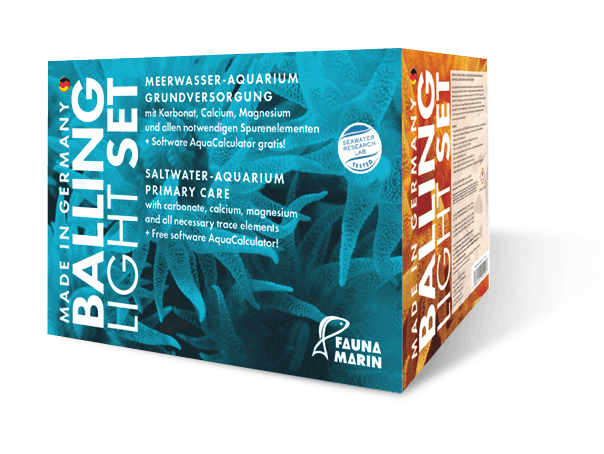Molybdenum
Compared to other trace elements, molybdenum occurs relatively frequently in seawater. The biochemical benefits of molybdenum are manifold and complex because molybdenum occurs in different oxidation states. Molybdenum is an important trace element directly for corals and is responsible for their colour variety. Molybdenum regulates the toxicity of copper for invertebrates. With a well-adjusted molybdenum concentration, a moderately increased copper concentration is tolerated better.
What’s this:
Like vanadium, molybdenum is a transition metal, essential and part of the Dynamic Elements as it is needed in many enzymatic processes within the nutrient cycle and within the cell functions. A lack of molybdenum should be avoided, because a nitrate reduction is not possible without molybdenum. Here molybdenum acts as a component of the important enzymes in the nitrogen cycle.
Problems:
In connection with iron, these enzymes are also used to utilize nitrates and reduce them to ammonium within the coral. A deficiency of these elements inevitably leads to a reduction in growth and an increase in nutrient levels. Higher values have hardly any influence and are well tolerated, too low values should be avoided as the light protection mechanisms of corals are also dependent on molybdenum. Vanadium and molybdenum also play an important role in the colouring of the corals and should be detectable in the correct ratio of approx. 1:3–1:4. (target value vanadium 3–5 µg/l (0,26 US.liq.gal.), target value molybdenum 12–15 µg/l (0,26 US.liq.gal.)).
High molybdenum levels can promote the growth of cyanobacteria in the absence of inhibitors and if the organic load is too high. However, a high molybdenum value alone is not alone responsible for this.
Measures:
Molybdenum can only be reduced slowly in a reef tank. Regular water changes, activated carbon and filtration via aluminium-based adsorbers are helpful.
Indicator species:
No specific genera or species, but generally low growth and dull colours, low gloss, susceptibility to STN/RTN and dinoflagellate infestation
Value too high:
Molybdenum is difficult to remove from the water. Partial water change and exchange of the bottom substrate, possibly filtering via zeolite or polyfilter are helpful. Locate the molybdenum source!
Value too low:
Elemental Trace Mo.
| Molybdän | Dynamic Element |
|---|---|
| Variety | transition metal |
| Richtwert | 10–12 µg/l (0,26 US.liq.gal.) |
| Skill Level | Yellow, experienced aquarists |
| Source | Salt, feed, phytoplankton, adhesives |
| Available | Elemental Trace Mo-, Balling-Light-System, Color Elements green/blue |
| Importance 1–6 | 6 |
| Detection quality | safe |
| Relation values | Dynamic Elements |

Balling Light:
Molybdenum is fed into the system via Trace Elements 1 and 2. In the other systems the addition takes place via Organic and via feed MIN S. The molybdenum content in MIN S comes from natural sources. If the concentration is too low, a salt change to professional Sea Salt or individual dosing of Elementals Trace can be used. The reduction of molybdenum is somewhat lengthy and is best achieved by partial water changes, filtering via iron-based phosphate adsorbers.
In connection with iron, these enzymes are also used for the utilization of nitrates and their reduction to ammonium in corals. A deficiency of these elements inevitably leads to a reduction in growth and thus in the absorption of nutrients from the aquarium.
Vanadium and molybdenum also play an important role in the colouring of corals and should be detectable in the correct ratio of approx. 1:3 – 1:4. (target value vanadium 3–5 µg/l, target value molybdenum 12–15 µg/l).
Molybdenum is an essential element for plants and animals (as well as for nitrogen-fixing bacteria) and an important cofactor in many enzymes, such as nitrate reductase and nitrogenase. The biologically available form, i.e. the form taken up by organisms, of molybdenum is the molybdate ion MoO42-. This is incorporated as a molybdenum cofactor into certain enzymes in several steps. Reducing processes can be carried out through the subsequent biological functions.
A sufficiently high concentration of molybdenum also helps to protect the corals from light stress. This is particularly the case in strongly illuminated tanks or when working with a dominant blue radiation component. Molybdenum prevents rapid “shifting” of corals. In contrast to vanadium or zinc, a significant increase in the molybdenum concentration does not give any advantage. The maximum effect is already achieved at 12–15 µg/l. It is rather important that molybdenum is in relation to the other Dynamic Elements. Please refer to our graph in your analysis report.
Tip:
High molybdenum concentrations often come from natural sources such as plankton and frozen food or feed mixtures. However, high molybdenum values are quite uncritical and only relevant when reaching or exceeding 40–50 µg/l. Molybdenum is especially important for corals at high light radiation levels.